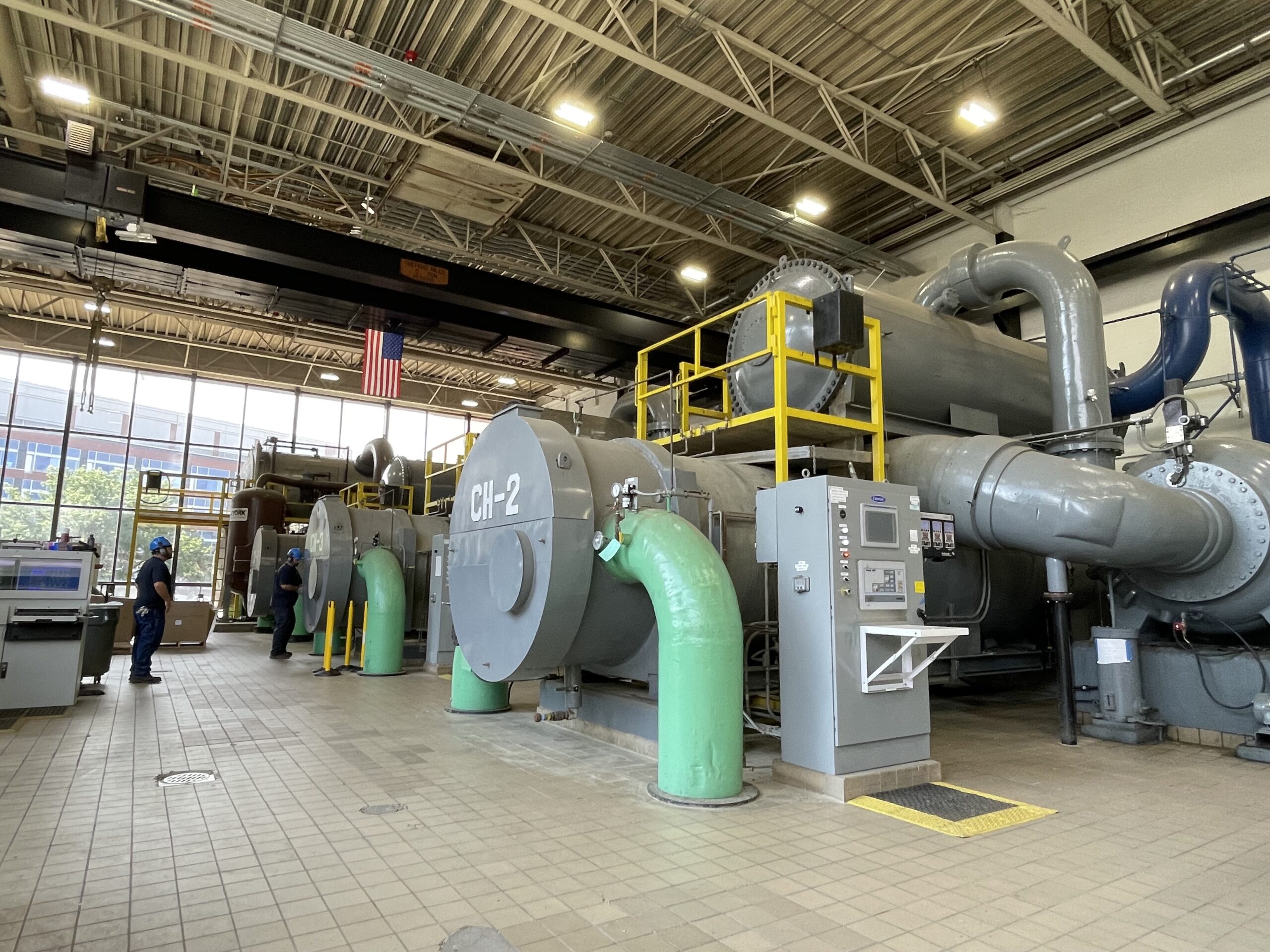In June 2022, the University Board of Trustees approved a cooling tower and chiller electrification project estimated to cost $45 million. This project will increase chilled water production capacity, decrease reliance on Genesee River water and decrease greenhouse gas emissions at the University by approximately 10%.
What is the project and why is it happening?
This massive project is split into two main parts: the building and connection of a new cooling tower and the electrification of the steam-driven chillers in the Central Utilities Plant (CUP). Director of Utilities and Energy Management Mike Whitmore explained, “The first and main initiator of the project was that it will increase our chilled water capacity so we can serve the new emergency department tower. As we worked on the design, we realized we wanted to consider more sustainable options which led to taking a hard look at getting off the river water and electrification.”
Chiller Electrification
Currently, only one of the Central Utility Plant (CUP) chillers is connected to a cooling tower, the rest utilize the Genesee River. All of the CUP chillers are steam-based, meaning that steam drives the turbine motors to compress the freon in the chillers. This steam is produced from the burning of natural gas. Once the motors are powered by electricity, there will be a significant reduction in demand for steam, although not eliminated as it is also used for heating. Whitmore pointed out that since Upstate New York has the cleanest electricity in the country, this will be a great way to reduce greenhouse gas emissions at CUP. Additionally, the passage of the Climate Leadership and Community Protection Act in New York in 2019 is driving electricity generation even cleaner in the coming years.
New Cooling Tower
In conjunction with the electrification project is the construction of a new and larger cooling tower to serve CUP. The existing cooling tower is used to cool the water from one of the chillers. By electrifying the chillers, the new cooling tower can be built at half the size. A location for the tower is still being determined.
The new cooling tower will also decrease dependence on river water. Once the rest of the chillers are connected to a cooling tower, they will no longer need river water to cool. Whitmore described a cooling tower, “It’s like stirring a cup of coffee. You’re stirring it so you move the surface area and bring the hot liquid up to cool it. That’s what a cooling tower is in essence.”
The Cogen aspect of CUP which produces hot water and electricity will not be affected by this project. In simple terms, Whitmore explained that CUP produces four things: chilled water, hot water, steam (will be less), and electricity
What is the time frame?
Before any chiller electrification can happen, the electricity load for the Medical Center needs to be flipped from CUP to the Mid-Campus Substation. This will allow CUP to have the electrical capacity for the chillers once they are off steam. There is currently capacity at the substation but the additional infrastructure is needed to transfer the load from CUP to the substation such as new cables.
Whitmore also stated that they need to solidify the design of the cooling tower in the next year and plan to build it within the next four. They will start by putting two chillers on the new cooling tower while still on steam and then convert them to electricity and add the rest. In total, this project is expected to span seven years and cost approximately $45 million, with $17 million dedicated to chiller electrification.
As noted earlier, this electrification will allow the University to reduce its overall greenhouse gas emissions by approximately 10%. UEM is also working on reducing energy use and greenhouse gas emissions through its Fault Detection and Diagnostics (FDD) and Building Scheduling Optimization (BSO) pilot projects. UEM aims to reduce energy consumption by at least 10% in the tested buildings.
“The University is making a big commitment to attain these environmental benefits,” Whitmore stated.
Written by Sarah Woodams ‘24(T5)


It sounds good, but I wonder if it would not be more profitable to use renewable energy in this case? These methods of energy production do not emit greenhouse gases after they are launched. To learn how to safely install renewable energy devices, or in your case, a power plant, I recommend reading this article: https://fluix.io/blog/emerging-trends-in-health-and-safety-in-construction